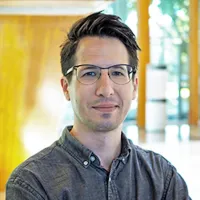
Dr. Adam Rysanek
Program Director
When we design high-performance buildings, we’re trying to find a balance between ensuring the comfort and well-being of the building’s occupants and minimizing the building’s environmental impact. This also needs to be achieved economically. Taken together, this creates interesting interdisciplinary challenges for those involved in the design, construction and maintenance of these buildings.
I’m an engineer by training and have focused my career on buildings and energy science. During my PhD studies, I was involved with Cambridge University’s Energy Efficient Cities Initiative, an interdisciplinary research team of architects and engineers who were trying to model the performance, energy efficiency and air quality of entire communities and cities — engaging with some of the UK’s leading building consultancies in the process.
I spent three years in Singapore managing the ETH Zurich 3for2 Beyond Efficiency Project that resulted in the design and construction of a living laboratory and technology demonstrator expected to become Singapore’s most energy-efficient office space in 2018. Our vision for the project was to take a research concept for a novel, structurally integrated air-conditioning system and to implement it within the normal design-build process and time frame comparable to conventional construction projects in the country. As much as anything, the project was a way of determining effective strategies for bridging research and practice; communicating between researchers, consultants and builders; and finding productive ways for researchers to engage in site supervision.
This experience has given me first-hand knowledge of the importance of combining technical and leadership skills, something that the Master of Engineering Leadership (MEL) in High Performance Buildings program also emphasizes through its combination of engineering and business classes. Strong communication and project management skills are absolutely essential in all areas of work, but particularly when articulating the merits of innovative technologies or approaches to developers, building owners and colleagues. Professionals who are able to “speak” the language of both engineering and business are more likely to be successful in implementing new ideas in commercial buildings especially.
I’ve just recently moved to Vancouver and I’m excited to be here. UBC has an incredible number of people working on sustainability issues from many different disciplines and mindsets. Vancouver as a city is also a perfect location to explore these topics. While the economics of Vancouver’s built environment has its own challenges, the city has had an earlier start than others in bringing sustainability to the forefront. This makes it a vibrant place to do research.
Experience
Dr. Adam Rysanek is Assistant Professor of Environmental Systems at the School of Architecture and Landscape Architecture at UBC. He completed his PhD in Engineering at the University of Cambridge in 2014, and previously received his MScE and BASc in Mechanical Engineering from Queen’s University in Canada. He is an expert in green building design, construction and operation, including the integrated technical and economic modelling of building- and community-integrated low-carbon energy systems. Underlying his research has been the pursuit of finding new ways to visualize, analyze and communicate building data and information in an increasingly interdisciplinary sector. Between 2014 and 2017, Dr. Rysanek was a Senior Researcher and Manager of the 3for2 Beyond Efficiency Project at ETH Zurich’s Future Cities Laboratory in Singapore. His prior work includes contributing to consulting practices in the Canadian and British building and renewable energy sectors.